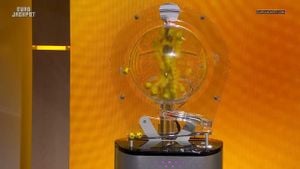Researchers have shed new light on the phenomenon of mind blanking (MB), where individuals find their thoughts momentarily hindered during free-thinking moments. Their findings reveal intriguing connections between variations of autonomic arousal and the frequency of mind blanking episodes, emphasizing how both mental and physiological states interplay.
The study, involving 26 healthy participants, explored how different arousal levels—triggered by sleep deprivation and high-intensity physical exercise—impact the occurrence of mind blanking. The research indicated a notable rise in mind blanking reports following low arousal conditions, such as sleep deprivation, paired with partial evidence of increased occurrences during high arousal conditions.
“We found mind blanking was reported more frequently when participants experienced low arousal,” the authors stated. “Interestingly, following intense exercise, there was also some indication of heightened mind blanking instances.” The research employed experience sampling, alongside neural and physiological monitoring, to lend comprehensive insight.
During the study, participants were prompted to report their mental states during low, high, and baseline arousal conditions. Notably, low arousal conditions saw mind blanking reported with significantly greater frequency compared to both baseline and high arousal conditions, illustrated by participants struggling to articulate thoughts after sleep deprivation. Reaction times were significantly delayed when participants were asked to report instances of mind blanking, indicative of the depth at which arousal influences cognitive performance.
The findings suggest the intricacies of the mind-body connection, positing mind blanking not only as a cognitive event but as one intricately tied to physiological states. Cortical arousal—associated with alertness and responsiveness—and autonomic arousal, which reflects bodily functions such as heart rate and skin response, both play pivotal roles.
Study participants reported not just mind blanking but also mind wandering (MW) and sensory experiences during the task. Interestingly, following sleep deprivation, it became apparent there was less likelihood of transitioning from mind wandering to another episode of mind wandering, with MB occurrences increasing instead. One explanation may lie within the cognitive load exerted during extended periods of wakefulness, resulting in participants experiencing more moments devoid of content to report.
“These findings challenge previous assumptions,” the authors elucidated. “After sleep deprivation, rather than leading to more mind wandering, it appears mind blanking becomes more prominent.”
The researchers also examined how brain and body markers could jointly predict the occurrences of mind blanking. They employed various machine-learning classifiers to understand the relationship between autonomic arousal patterns and cognitive functions. The use of features derived from both EEG and physiological recordings brought them closer to classifying when mind blanking was likely to happen. Interestingly, these classifiers demonstrated greater success when trained on both brain and body data compared to models using only one of those sources.
“This evidence lends support to the idea of embodied cognition, showing cognition is supported not solely by neural processes but also by physiological changes,” the authors remarked.
The researchers remain optimistic about the broader relevance of their study, with potential applications extending from cognitive performance assessments to improved treatments for cognitive impairments.
Overall, this research illuminates valuable new perspectives on the mind-body connection, bridging cognitive and physiological domains, and deepening the scientific community’s comprehension of mind blanking. Significantly, it opens avenues for future studies to decipher how variations of arousal can affect cognitive experiences across different contexts.



